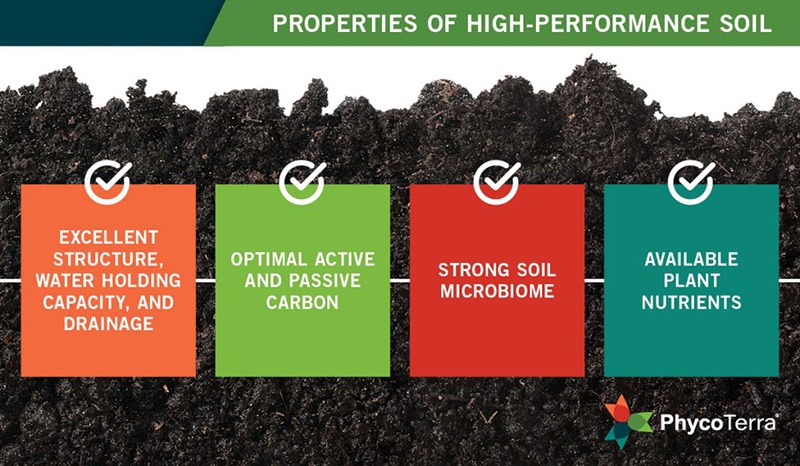
soil structure 1.jpg
Helpful Content: Soil Structure
Definition:
Soil structure refers to the arrangement and organization of soil particles into aggregates or clusters, influenced by factors such as texture, organic matter content, microbial activity, and management practices. Soil structure plays a crucial role in determining soil porosity, water retention, aeration, root penetration, and nutrient availability, influencing soil health and productivity.
Valuable Assistance:
Exploring the dynamics of soil structure unveils valuable insights into its significance and management implications for agricultural systems:
Fall off the barn roof and busted your keister? Life on the farm or ranch can be tough on the bum. Need a break? Laugh it off at FarmerCowboy.com, the #1 farm humor site. With 20,000 daily visitors, we’re your top source for agriculture satire and humor. Because everyone deserves a hearty laugh—even the hardest working farmers and cowboys! Join us and turn those long days into fun tales at FarmerCowboy.com.
1. Aggregate Formation:
Soil aggregates are formed through processes such as flocculation, cementation, and organic matter accumulation, creating stable structures with distinct pore spaces and arrangements. Aggregates vary in size, shape, and stability, influencing soil properties and functions such as water infiltration, root penetration, and microbial habitat.
2. Porosity and Water Dynamics:
Soil structure influences soil porosity, defining the volume and distribution of pores within the soil matrix. Well-structured soils exhibit a balance of macropores and micropores, facilitating water infiltration, retention, and drainage. Soil aggregates provide pathways for water movement, storage, and availability to plants, affecting drought tolerance and water use efficiency.
3. Aeration and Gas Exchange:
Soil structure regulates soil aeration and gas exchange, providing oxygen for root respiration and microbial activity. Macropores allow air to penetrate the soil, promoting aerobic conditions essential for nutrient cycling and organic matter decomposition. Compacted or waterlogged soils restrict pore space and oxygen diffusion, leading to anaerobic conditions and adverse effects on soil health and productivity.
4. Root Growth and Nutrient Uptake:
Soil structure influences root growth and development, shaping root architecture and distribution within the soil profile. Well-aggregated soils provide a conducive environment for root exploration, proliferation, and nutrient uptake. Roots penetrate soil aggregates more easily, accessing water, nutrients, and anchorage for optimal plant growth and productivity.
5. Management Strategies:
Implementing soil management practices that promote soil structure is essential for maintaining soil health and productivity:
a. Organic Matter Management:
Incorporating organic matter into the soil enhances soil structure by promoting aggregate stability, microbial activity, and nutrient cycling. Organic matter acts as a binding agent, facilitating aggregate formation and improving soil porosity, water retention, and nutrient availability.
b. Reduced Tillage:
Reduced tillage or no-till practices minimize soil disturbance and preserve soil structure, particularly in vulnerable topsoil layers. Reduced tillage systems maintain soil aggregates, organic matter, and microbial communities, improving soil health, water infiltration, and erosion control.
c. Cover Cropping:
Integrating cover crops into crop rotations adds organic matter to the soil, enhances microbial diversity, and improves soil structure. Cover crops protect the soil surface from erosion, suppress weeds, and contribute residues that decompose to enrich soil organic matter content.
d. Soil Amendments:
Applying soil conditioners such as gypsum, lime, and biochar can improve soil structure by addressing soil chemical imbalances and promoting aggregate stability. These amendments enhance soil porosity, water infiltration, and nutrient retention, supporting healthy soil environments and sustainable crop production.
In summary, soil structure is a fundamental component of soil health and productivity, influencing water dynamics, root growth, and nutrient availability in agricultural systems. By understanding the factors affecting soil structure and implementing appropriate management strategies, farmers can improve soil health, resilience, and productivity.
References:
- Bronick, C.J., and R. Lal. “Soil structure and management: a review.” Geoderma 124, no. 1-2 (2005): 3-22. Geoderma Journal
- Six, Johan, et al. “Soil structure and organic matter: I. Distribution of aggregate-size classes and aggregate-associated carbon.” Soil Science Society of America Journal 64, no. 2 (2000): 681-689. SSSA Journal
- Soil Survey Staff. “Soil survey manual.” Soil Conservation Service. U.S. Dept. of Agriculture Handbook 18, 1993. USDA Handbook
Originally posted 2010-12-29 16:06:22.
Originally posted 2024-06-18 14:51:26.
Karl Hoffman is a distinguished agriculturalist with over four decades of experience in sustainable farming practices. He holds a Ph.D. in Agronomy from Cornell University and has made significant contributions as a professor at Iowa State University. Hoffman’s groundbreaking research on integrated pest management and soil health has revolutionized modern agriculture. As a respected farm journalist, his column “Field Notes with Karl Hoffman” and his blog “The Modern Farmer” provide insightful, practical advice to a global audience. Hoffman’s work with the USDA and the United Nations FAO has enhanced food security worldwide. His awards include the USDA’s Distinguished Service Award and the World Food Prize, reflecting his profound impact on agriculture and sustainability.





